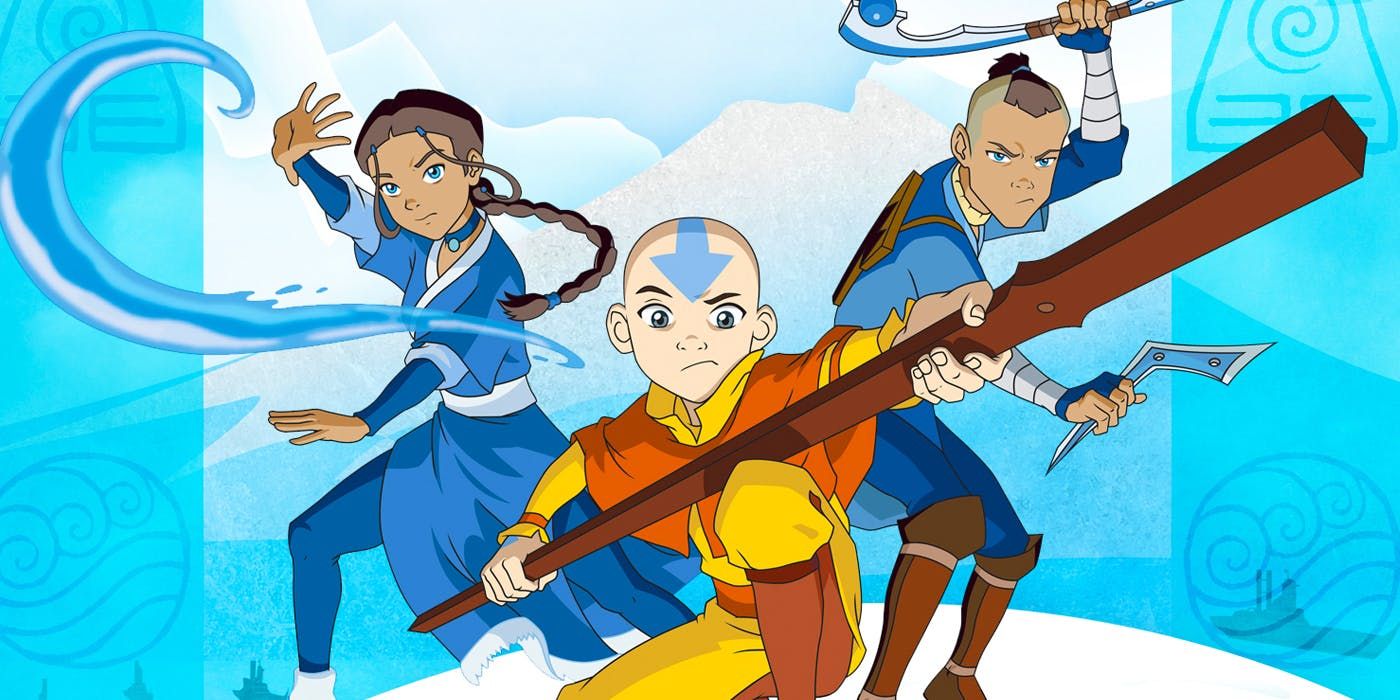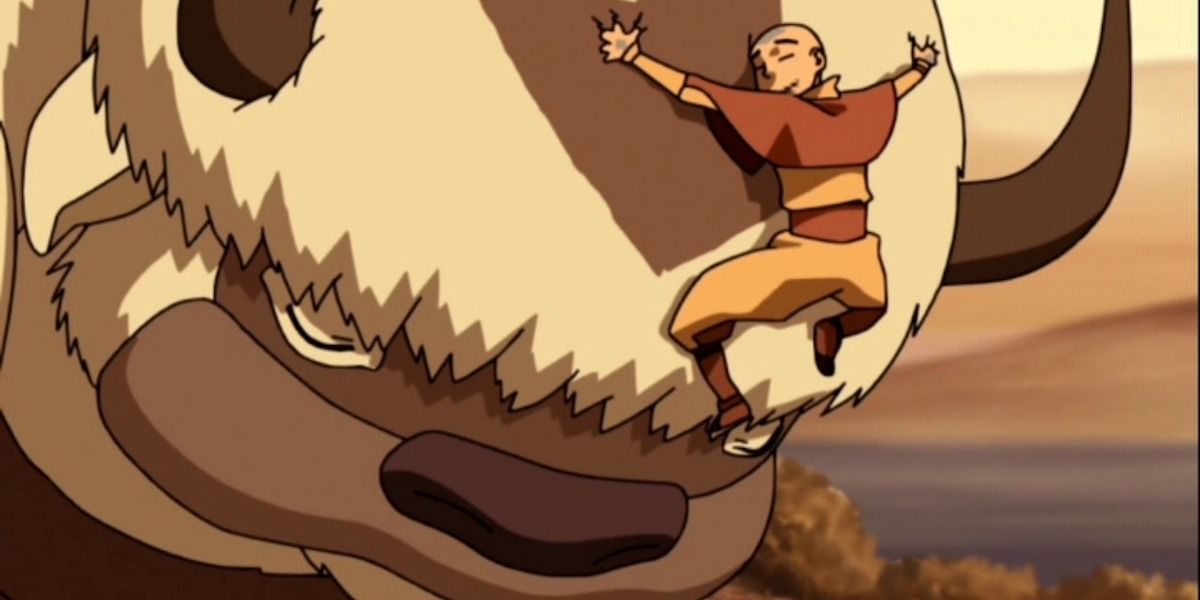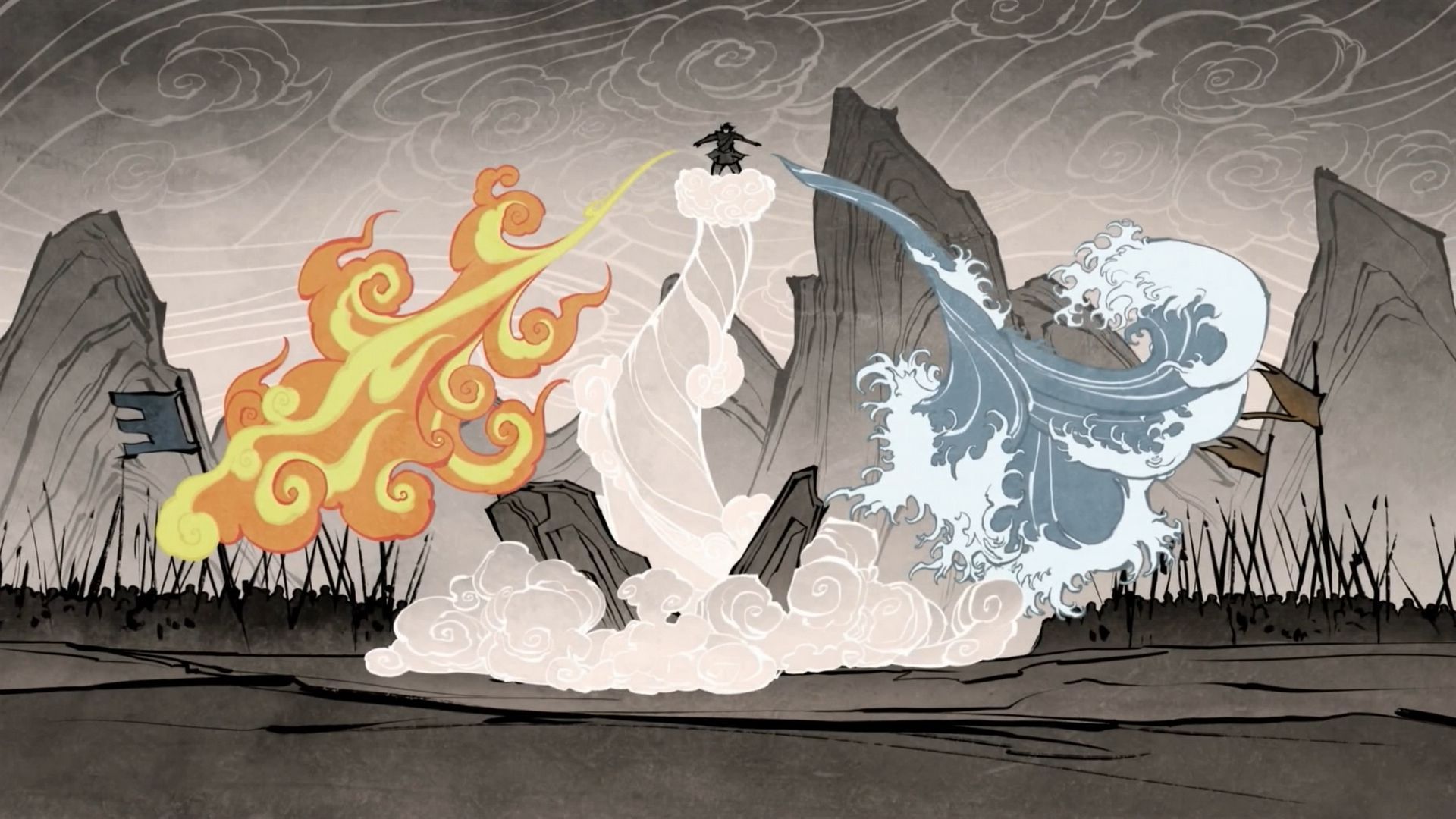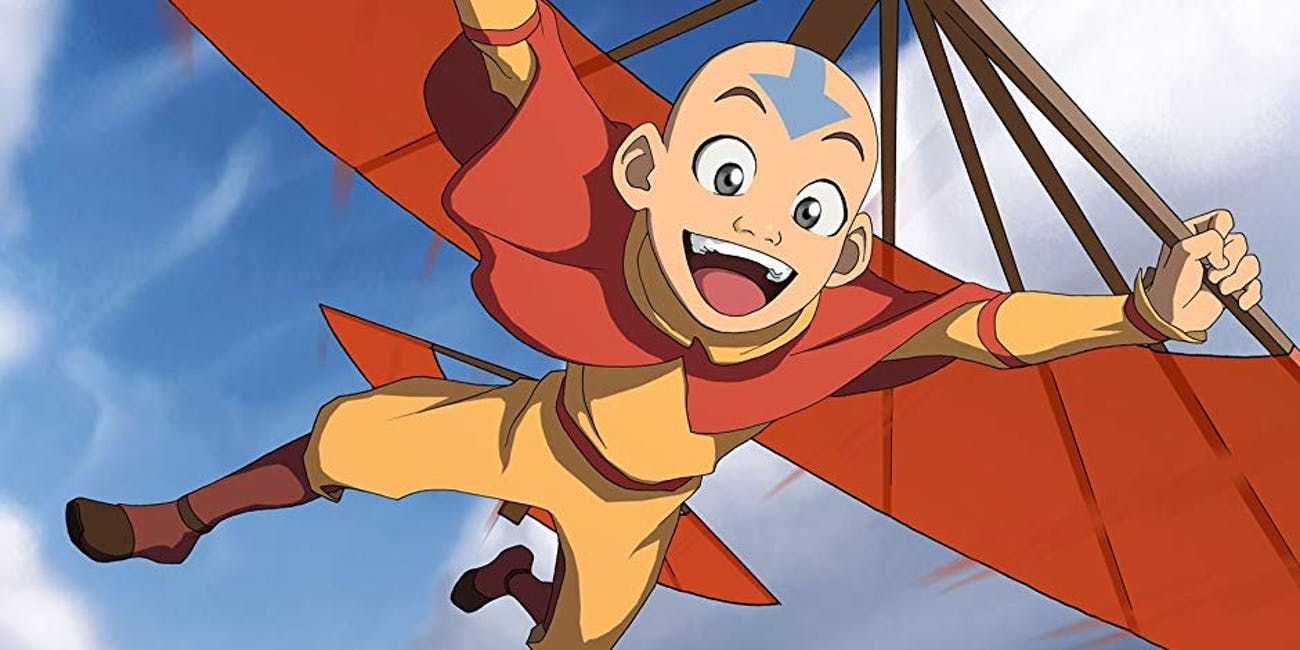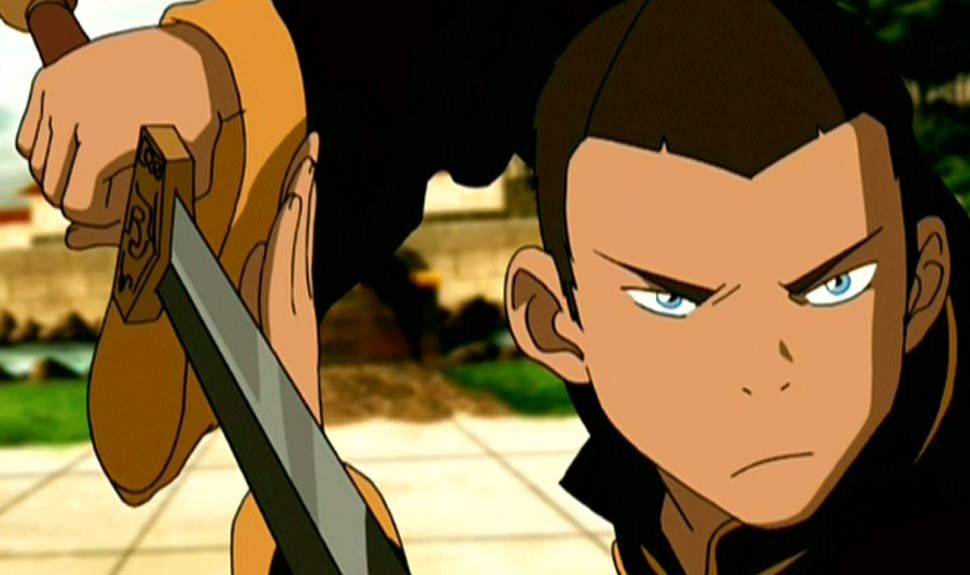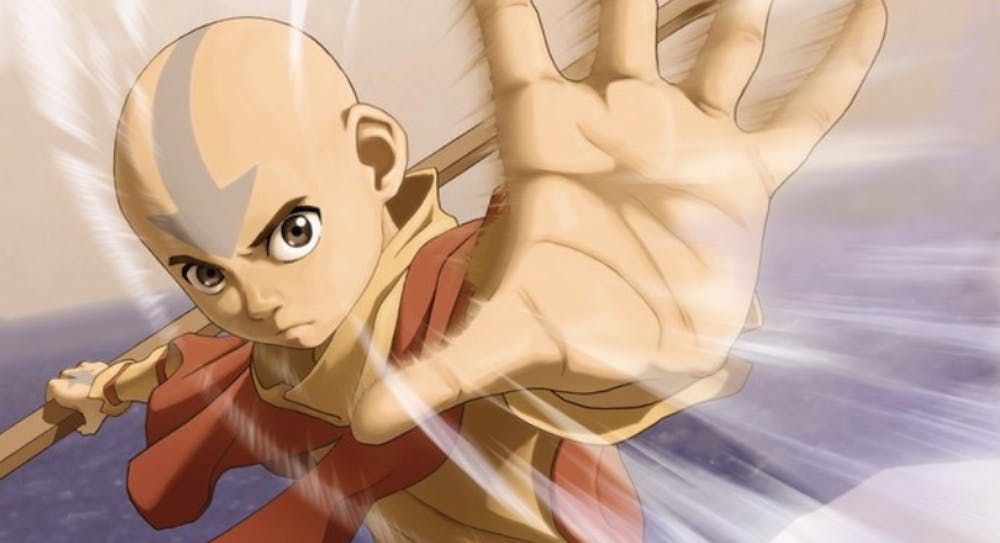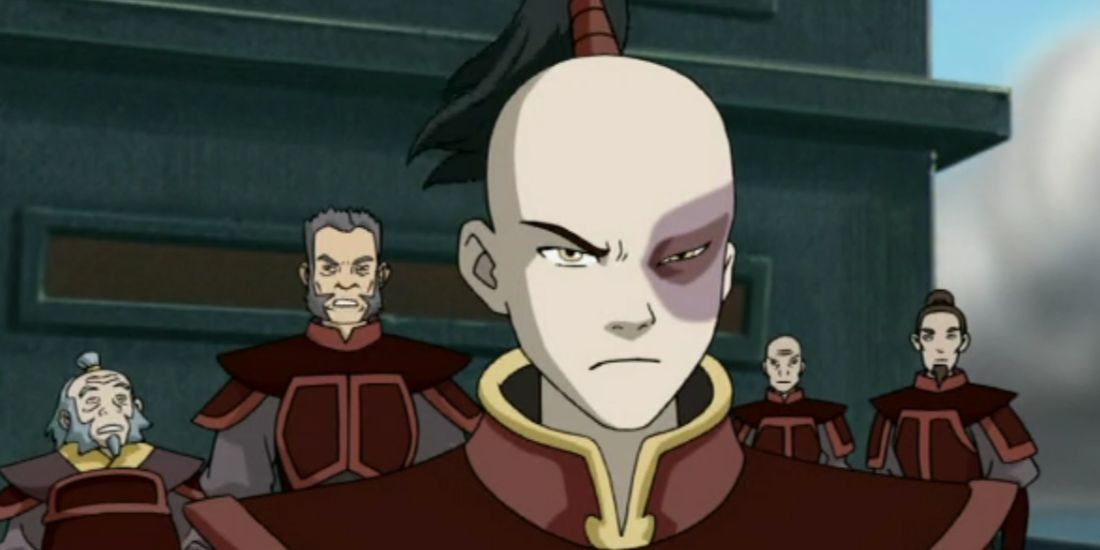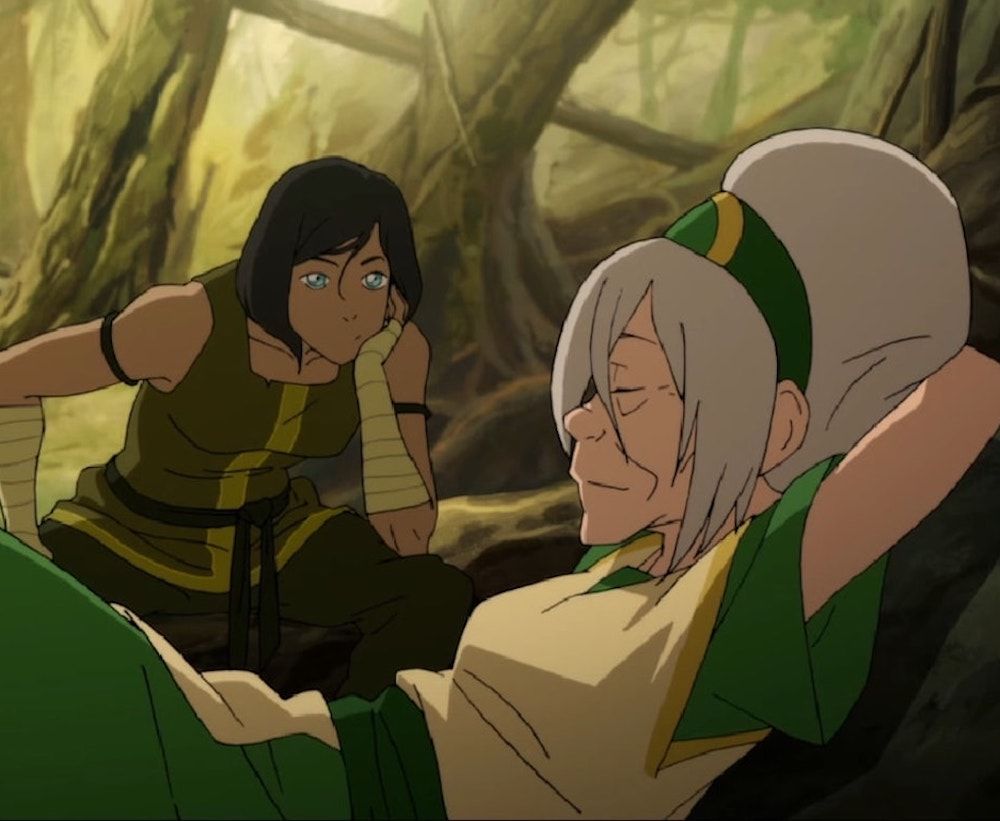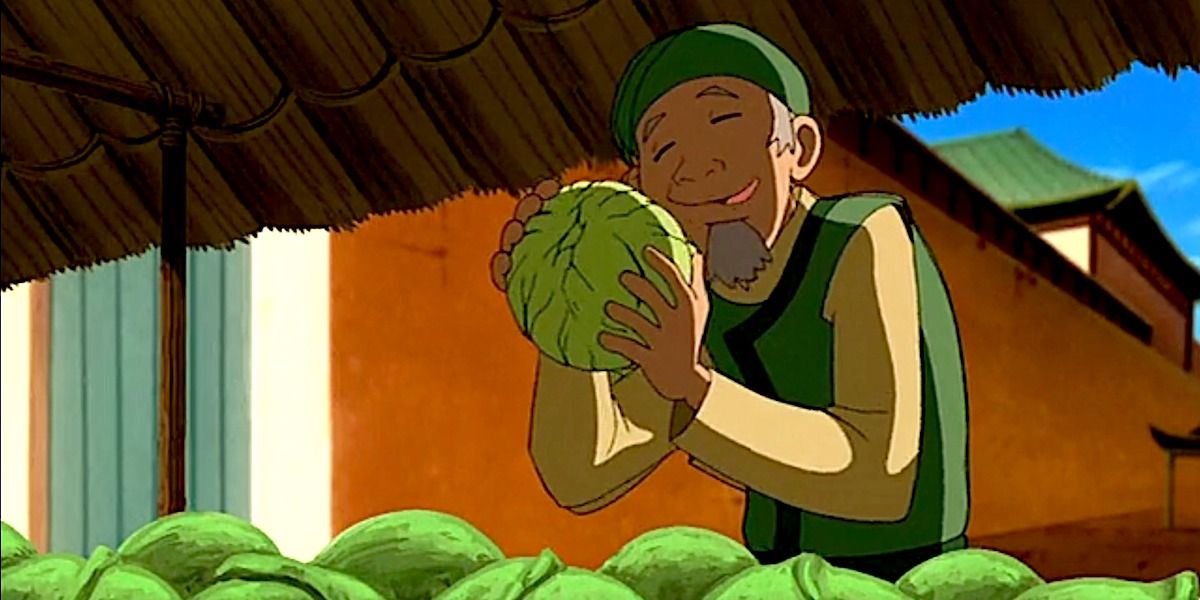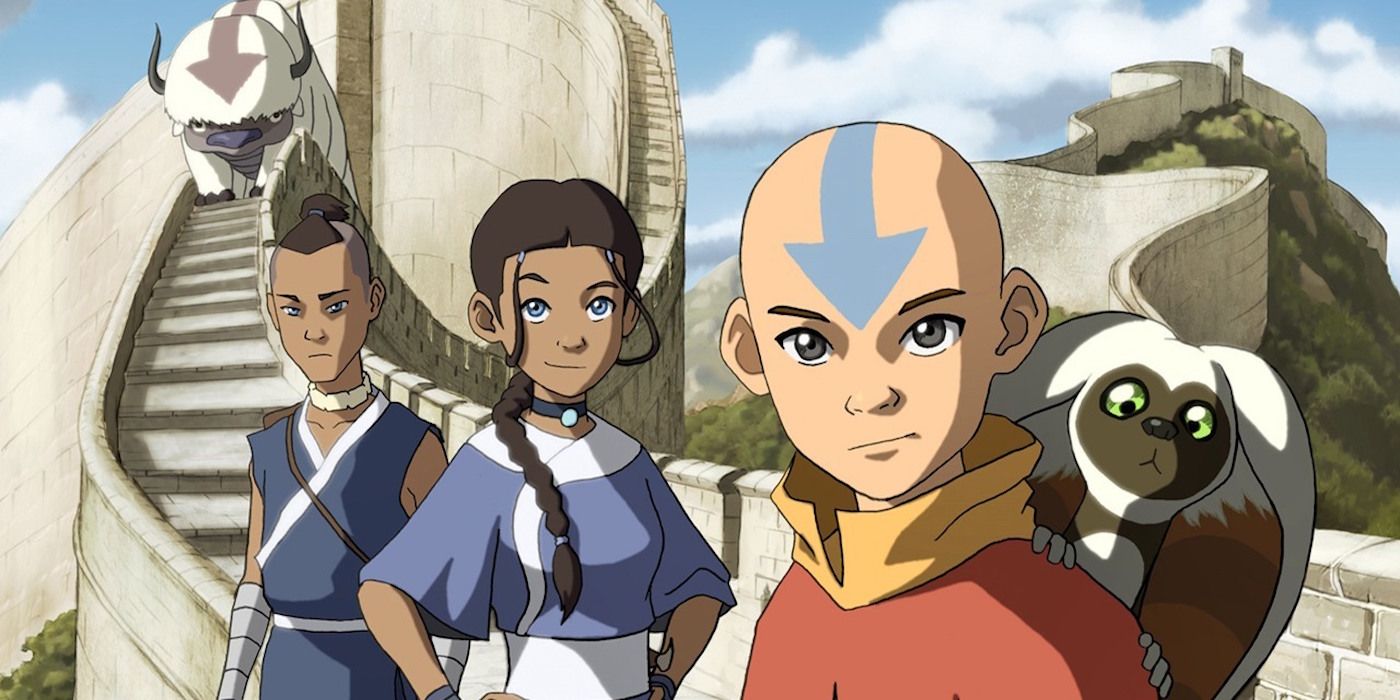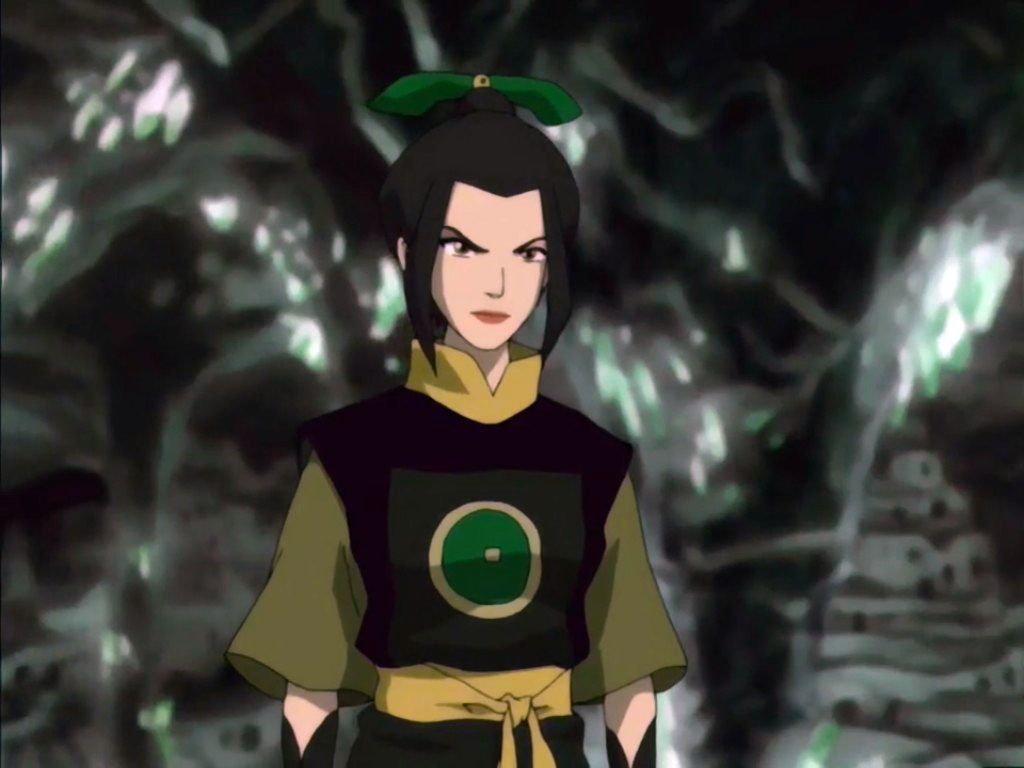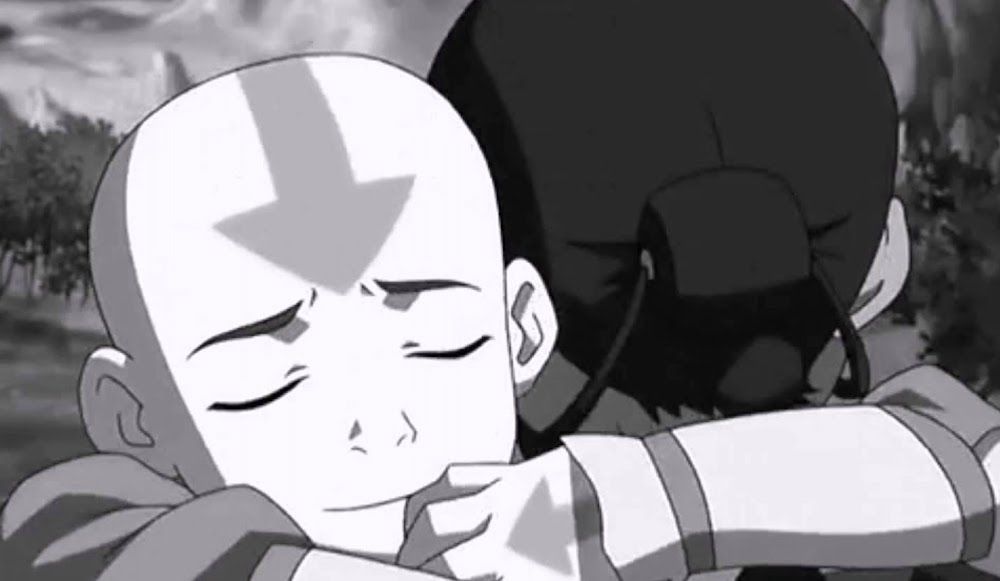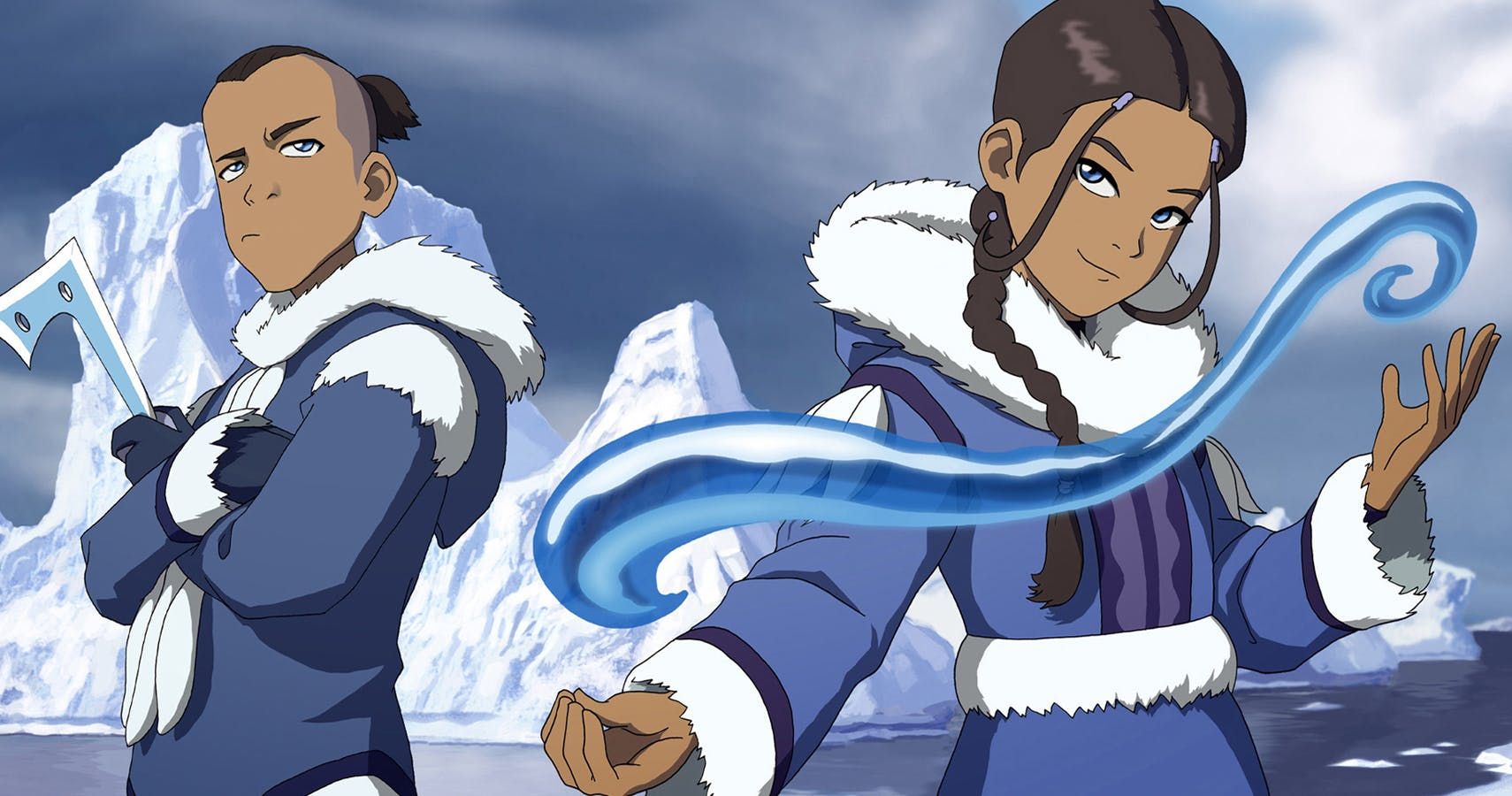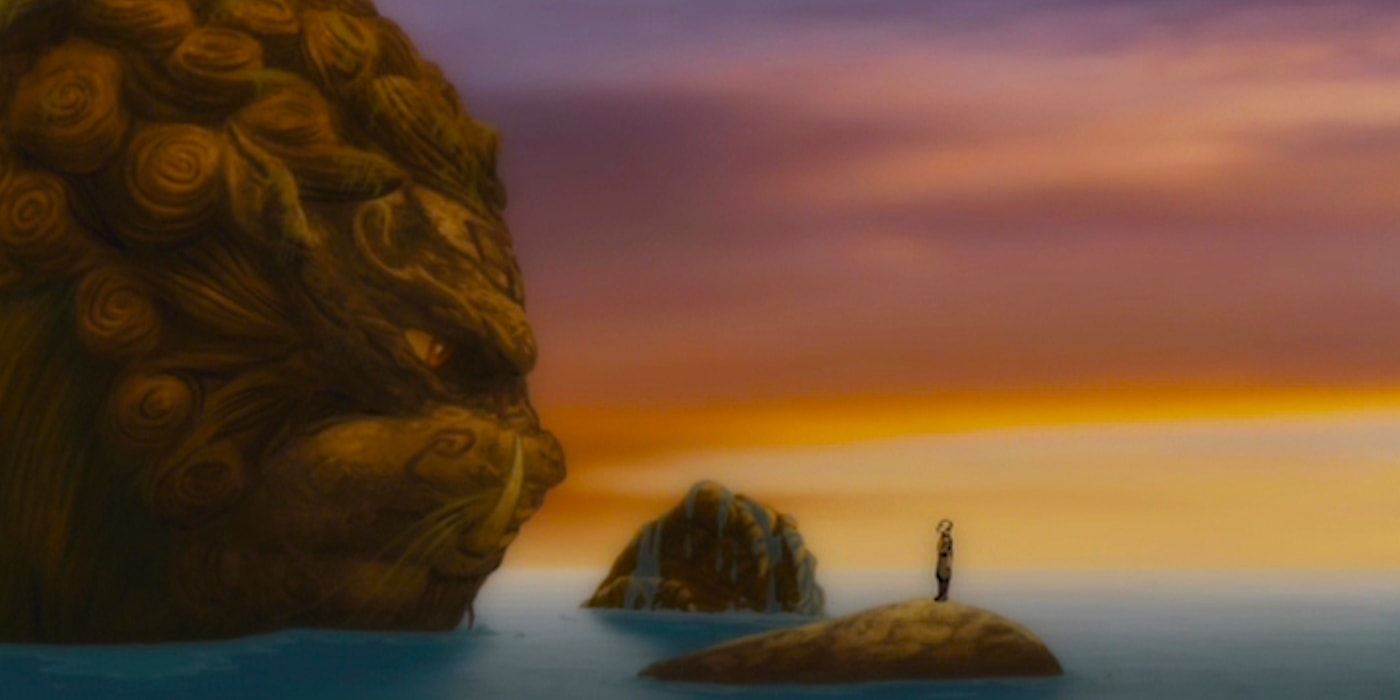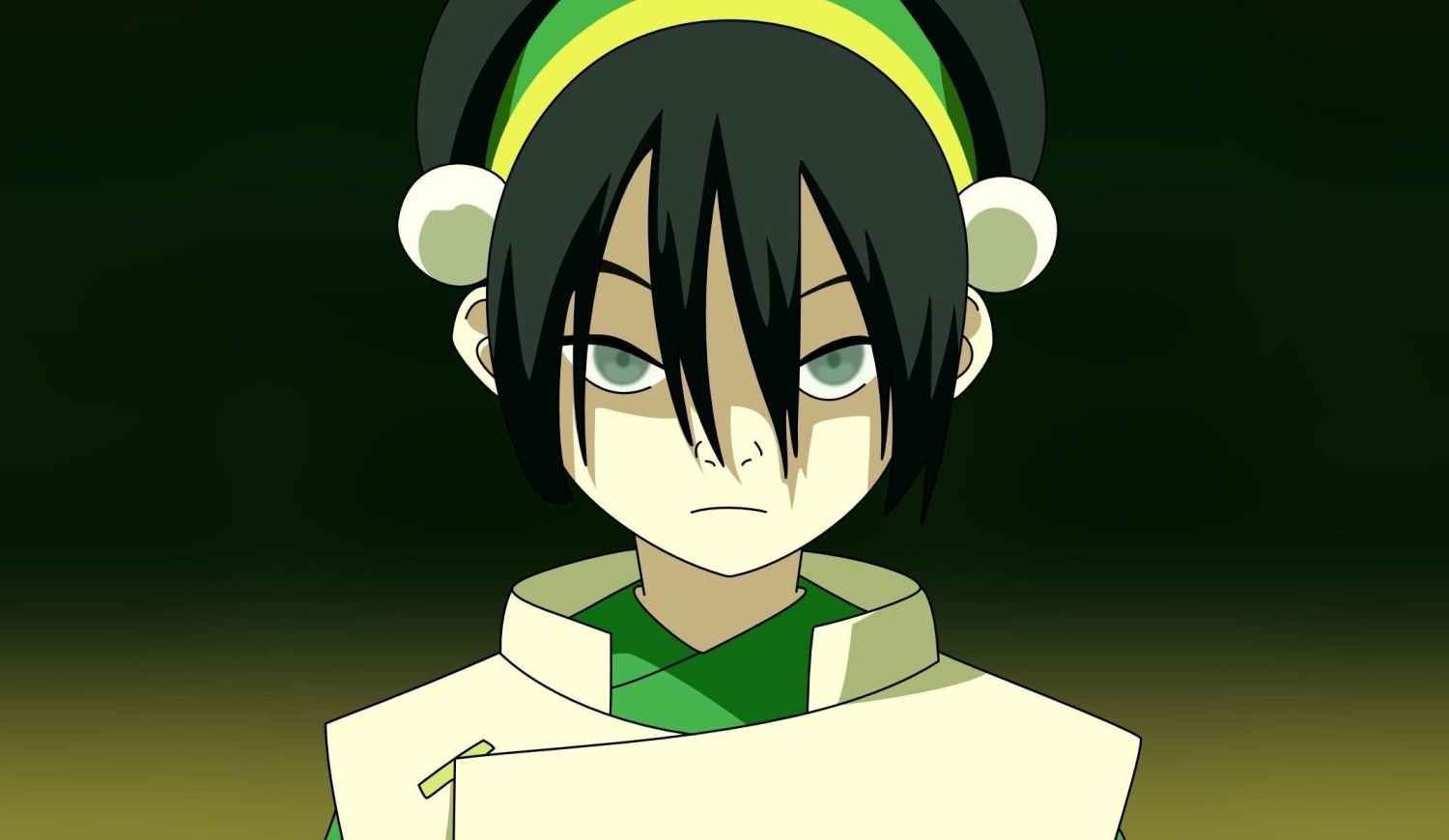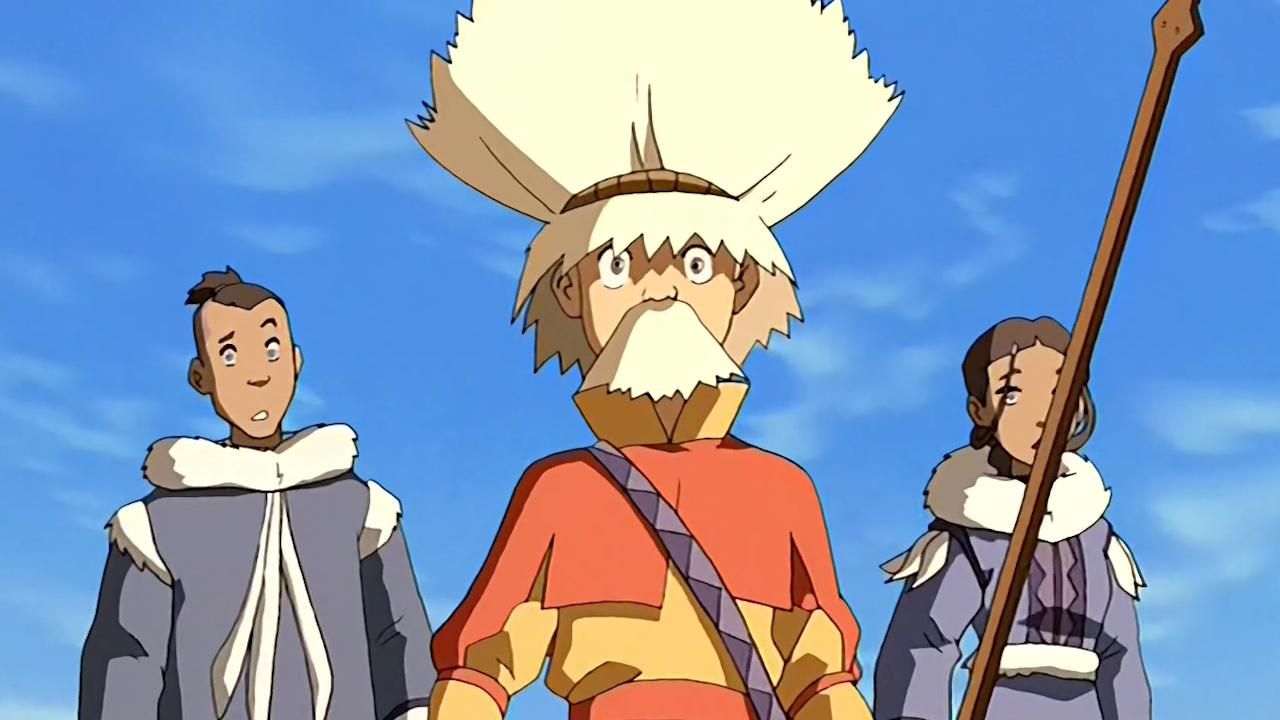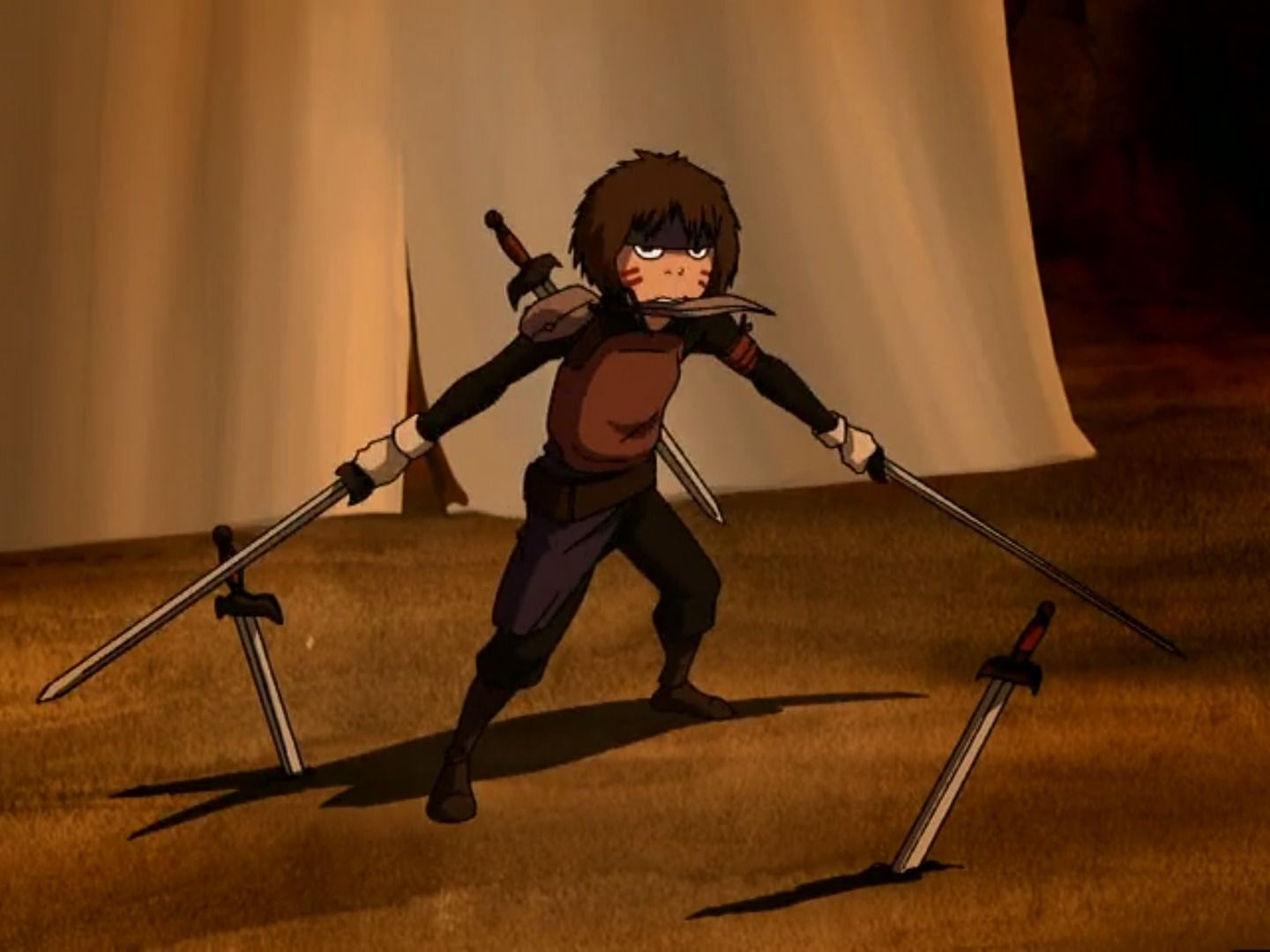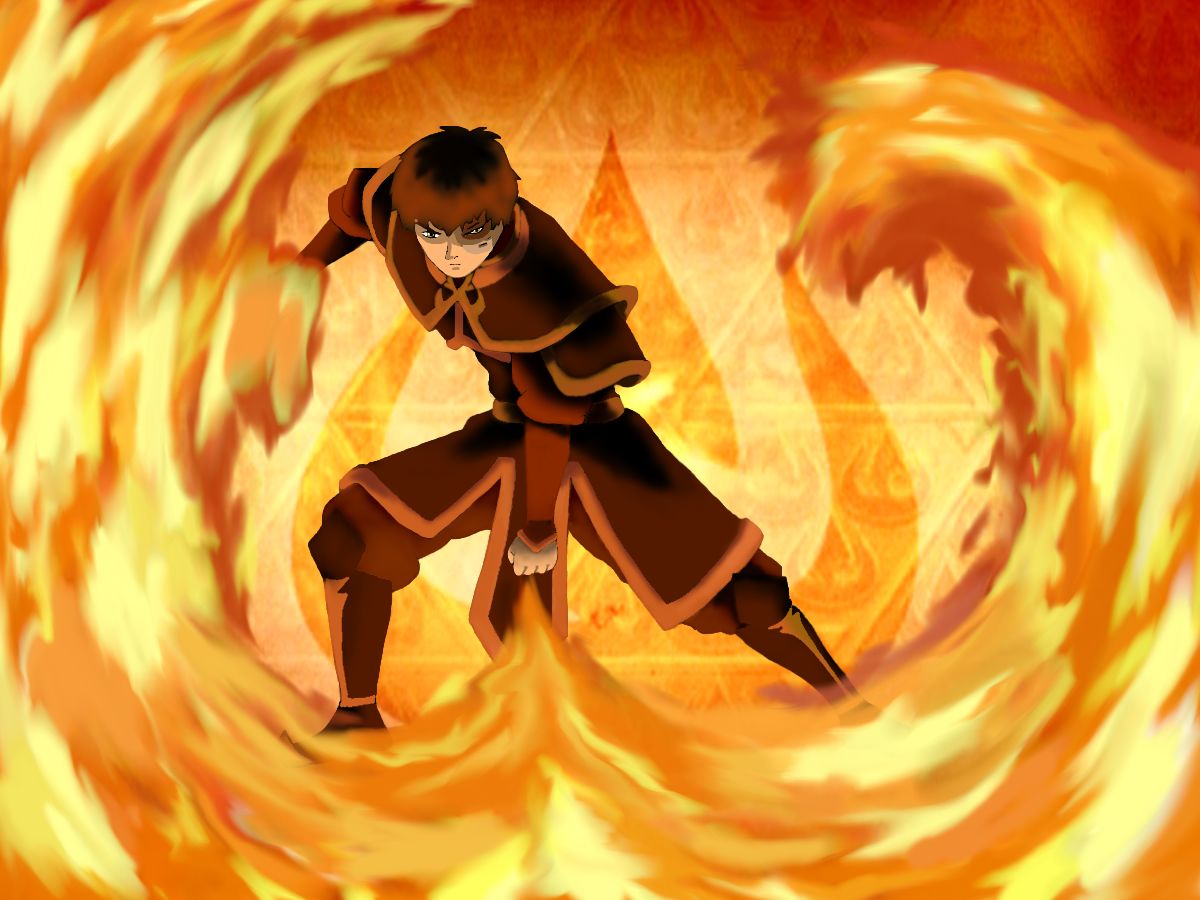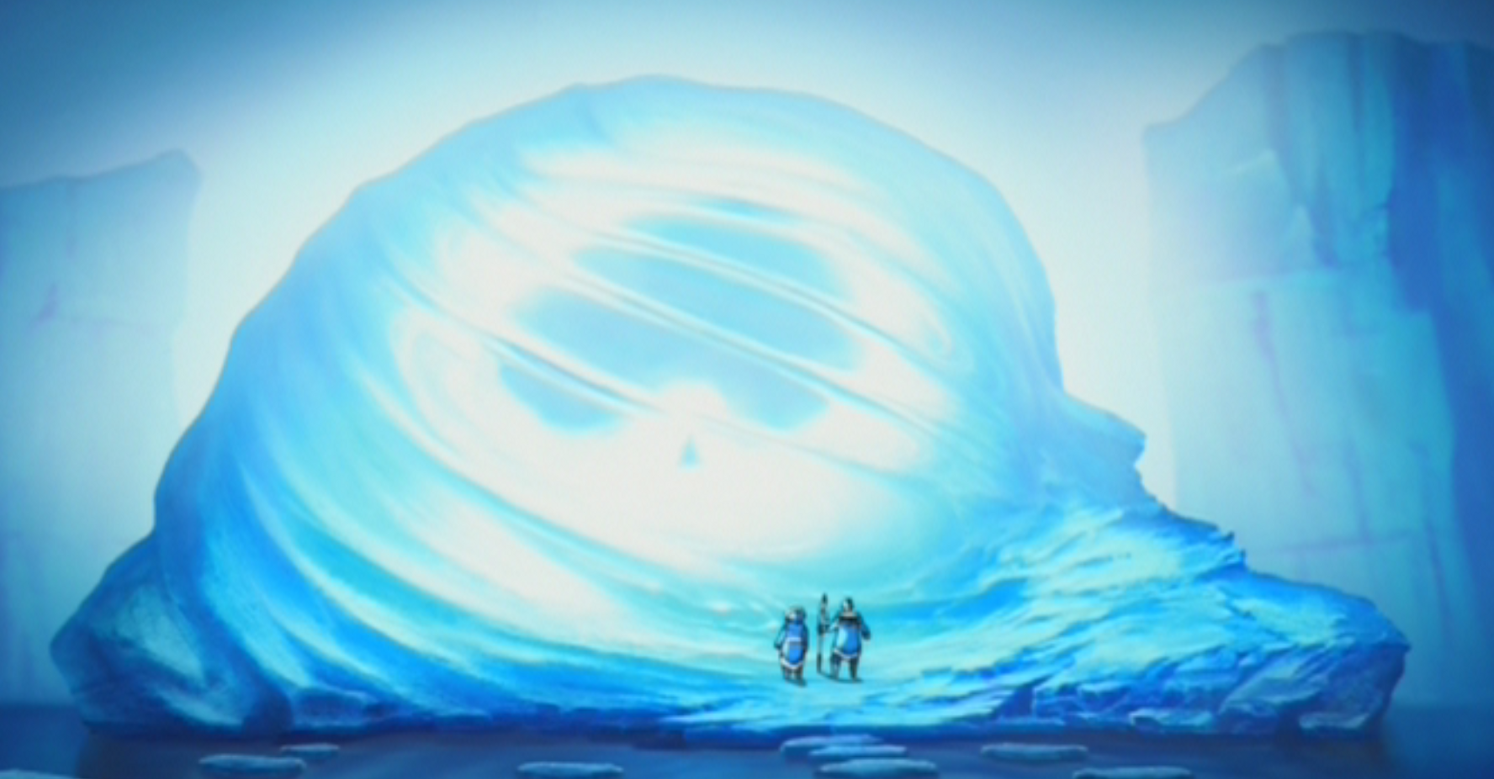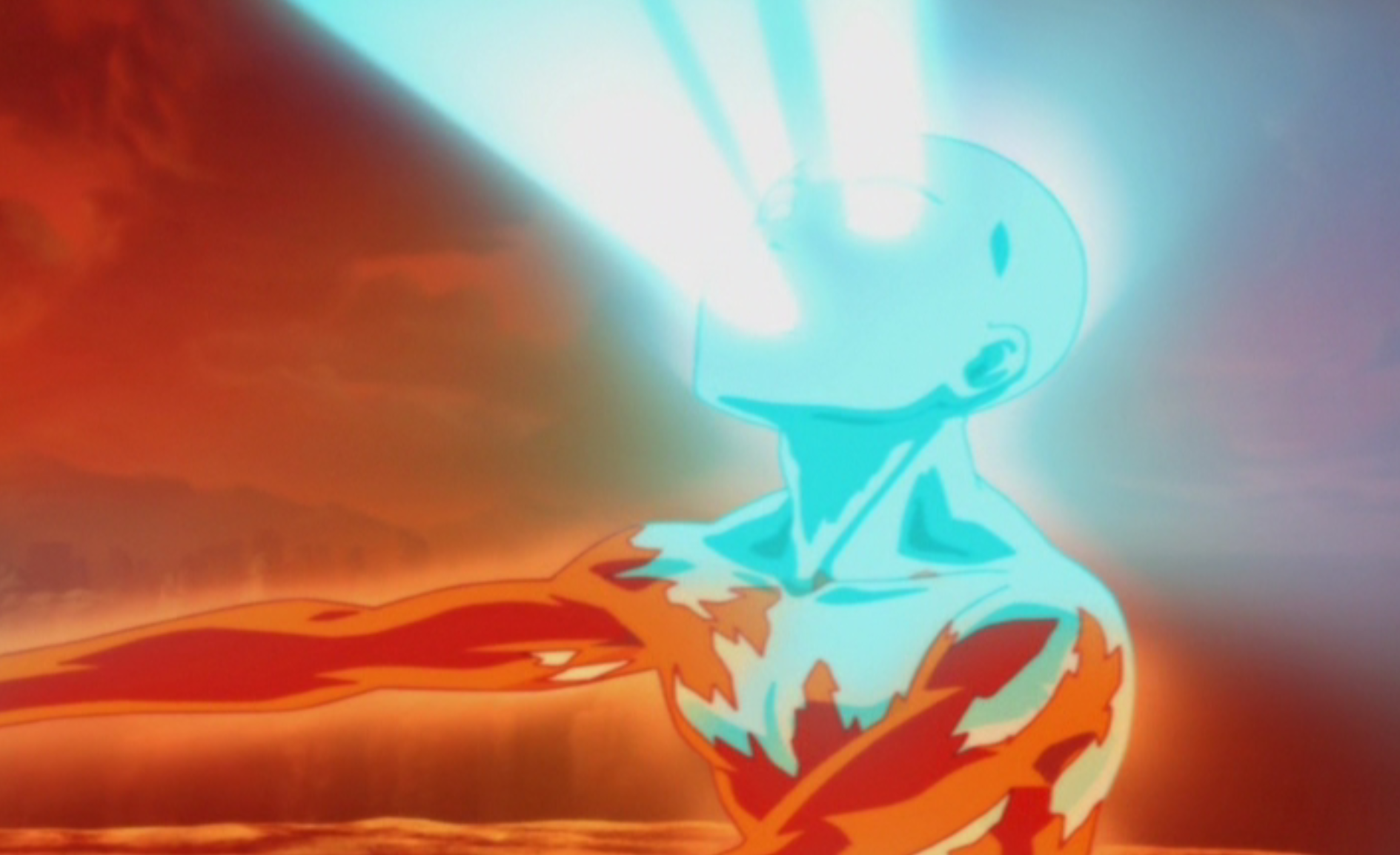Dealing with mature themes of war, abuse and the power of spirituality, Avatar: The Last Airbender was far from the prototypical animated Nickelodeon shows of the time. Targeting audiences of both younger and older generations, the show's nontraditional world and far-reaching scope made for a compelling and vast fantasy series, but according to co-creator Bryan Konietzko, the immense popularity of the action-adventure show came from its sincerity and heartfelt narrative.
As the brainchild of Konietzko and his collaborator Michael Dante DiMartino, the character of Aang was first conceived after Konietzko observed a balding, middle-aged man and sketched him re-imagined as a child herding bison. DiMartino, who had recently watched a documentary on explorers in the South Pole, combined his ideas with Konietzko's drawings and within two weeks the idea was born.
Drawing heavily from Japanese animation and Eastern philosophies, Aang's endearing journey as the last known Avatar coming of age during the height of the imperialistic Fire Nation quickly attracted an audience. Following the conclusion of Avatar, Konietzko and DiMartino have seen continued success through their follow-up series The Legend of Korra and have recently announced their involvement in a live-action version of ATLA set to stream on Netflix.
More than a decade removed from the show's end, the beloved series continues to have a following, though many questions still continue to irk fans. Although every mystery can't be resolved, there are still more lingering plot points than some of us would like to admit.
So join us as we take a look at the 25 Things Wrong with Avatar: The Last Airbender We All Choose to Ignore.
Everyone's Fine With Four Kids Traveling On A Sky Bison
Between the four primary protagonists of Aang, Katara, Sokka, and Toph, it isn't particularly comforting that perhaps the most immature of the four also happens to be the eldest. With Aang and Toph estimated to be around twelve and Katara and Sokka reported to be around thirteen and fifteen, respectively, the question arises as to how the team traveled around on a sky bison without drawing more concern.
In a universe strife with wartime conflicts, perhaps it wasn't particularly unsettling to witness children walking about freely, but with the amount of younger characters acting courageously throughout the series, it seems unlikely that they wouldn't draw attention from some of the older people of the communities.
The Traits Of Bending Are Confusing
Evidence throughout ATLA shows not every human is guaranteed to become a bender like their ancestors before them, but given the countless benders seen throughout the series, the exact specifics on bending traits still remains a bit murky.
It's understood that benders' spiritual sensitivities play an integral part in determining their bending abilities, but is it simply one's spirit which links a bender to their element or do genetics play a large role as well? Then there's the issue of which element a bender can bend. Is it simply region or genetics which determines a bender's element or may a certain type of bender be born into any nation?
Despite Its Complex Themes, It's Still A Kid's Show
With a plethora of children's programs marketed towards younger demographics, it's a rarity that a series' show-runners are able address mature themes while remaining steadfastly a show for kids; however, ATLA was somehow able to finesse its way into both younger and older age groups. Still, with all the show's complexities, there were still limitations.
Although creators Bryan Konietzko and Michael Dante DiMartino have admitted that they tried to keep the show away from gratuitous acts of violence, there were still moments where Nickelodeon gave them notes on keeping certain scenes more tame. Had the show been given free rein, it's possible the Avatar universe would've been even closer to the creators' true vision.
Sokka's Missing Sword And Boomerang
As the only lead protagonist without bending abilities, Sokka relied upon his ever-so-faithful boomerang and affectionately named space sword, which he forged from the remnants of a fallen meteorite. Although he'd never learn to refine his weaponry skills on an expert level, his final heroic efforts during the passing of Sozin's Comet helped save his life, while losing his trusted weapons in the process.
After commandeering and crashing a Fire Nation airship, Sokka sacrificed his sword and boomerang, sending them plummeting to the Wulong Forest beneath him. Although it's uncertain if he ever recovered his weapons, it seems unlikely he'd just forget them after all the good fortune they've brought.
Aang Isn't The Last Airbender
For a seemingly innocuous children's series, ATLA had a tough road with its name. Apart from the naming dispute between M. Night Shyamalan's The Last Airbender and James Cameron's Avatar franchise, which prevented further use of the Avatar name in feature film adaptations, there's also some confusion surrounding the legitimacy of Aang's last airbender title.
Although the Hundred Year War led to the destruction of every known airbender, the legend of the Avatar demands that all future Avatars master all four elements, including air. This means many airbenders would succeed Aang. Not to mention, Aang's son, Tenzin, would later appear in The Legend of Korra, marking the first airbender born in over a century.
The Absence Of Firearms
In the Avatar world a great technological disparity exists between the Fire Nation and the other three nations. Although the Fire Nation's mastery of fire allowed them to forge modern-era weapons of war, the other nations lived predominantly off the land with the Earth kingdom making homes from rock and the Water tribes living in igloos.
With all the Fire Nation's impeccable feats in modern weaponry, it's no great wonder how their totalitarian mindset led to complete dominance throughout the Hundred Year War, however, there is still some mystery over the absence of firearms throughout the series. With all their advancements, wouldn't someone have developed a gun to ease the nation's path to victory?
Who Is The Father Of Toph's Children?
Following the events of ATLA, Toph was championed for her discovery of metalbending. Immediately after the culmination of the Hundred Year War, she founded the Beifong Metalbending Academy where other potential metalbenders could learn the skill. Later, she was appointed Chief of Police for Republic City and became a mother to two children: Lin and Su.
Although the details behind Toph's romantic life have remained secretive, it's known that she became intimate with two men, neither of whom have been identified. Creators Bryan Konietzko and Michael Dante DiMartino have said little to shed light on the mystery men, though some fans have speculated that Sokka may have been a love interest at some point.
The Mysterious Cabbage Merchant
Making a legacy of his own, the unlucky cabbage merchant first appear in season one where his wagon of produce was sadly destroyed by a group of earthbenders. Originally intended as a brief joke, his unfortunate fate began a repeated occurrence throughout the series as his cabbages were ruined time and again at his expense.
Although he quickly became a fan favorite among viewers, questions arose from his repeat appearances. Exactly who was the sad cabbage merchant? Where did his seemingly unlimited supply of cabbages come from? And how did he always manage to travel across the world so quickly, always in time to find himself in yet another regrettable situation?
The Show's Pacing Is Problematic
Spread across three seasons, ATLA condensed many subplots into its 61-episode story arc. With all of the group's various excursions, the writers were able to delve deeper into the universe's specific cultures, but at times the show's overarching story was forced to take a backseat.
The pacing of the series is no more evident than in the beginning of season three. After the Earth Nation capital falls into Fire Nation hands, Aang is brutally injured, leaving all hope of an invasion up in the air. At the peak of the show's most chaotic moment, season three opts to begin at a deliberately slower pace, making for a frustratingly slow start.
Azula Is The Only One Who Bends Blue Flames
As a child prodigy under Fire Lord Ozai, Azula's ruthless pursuit for perfection was reflected in her fighting style. As denoted by her signature blue flames, ATLA creators Bryan Konietzko and Michael Dante DiMartino wanted Azula to stand out, giving her the power to emit the hottest fire of any firebender.
Although the flames of a bender reach varying colors depending on the temperature, the blue flame can only be reached with extremely hot temperatures. Seeing as how many expert level firebenders have preceded Azula, including her father and her uncle Iroh, it's unlikely that she would be the first of her kind to achieve such a feat over hundreds of years of firebending.
The Romance Was More Awkward Than Romantic
Although ATLA's romantic subplots often took a backseat to Aang's quest to dismantle the imperialist Fire Nation, the hotly debated Kataang versus Zutara ordeal still leaves many fans underwhelmed by the show's lackluster romance.
Throughout the series the budding romance between Aang and Katara is evident through tender moments shared between the series' more epic storyline, but at one time, the show's show-runners considered having Katara end up with the series' leading antagonist Zuko.
Although Kataang would ultimately win out, some have argued that the firebending prince was a much better option as Aang was more immature than Katara with the latter often serving as more of a maternal figure than a love interest.
Sokka And Katara's Adjustment To The Outside World Is Too Easy
Raised by the Southern Water Tribe, Katara and Sokka were never exposed to the wartime communities of the other nations prior to encountering Aang. After losing their mother to a Fire Nation attack, their father went to fight in the war, leaving them with their grandmother. Located in a frozen tundra, they lived in igloos, knowing only about the outside world through stories.
Although Katara's maternal nature and Sokka's warrior-like mentality made them equally strong-willed, their adaption to the outside world was still too quick for two people with such little exposure. Given what little they'd witnessed, both should've gone through developmental stages when adjusting to the other nations, yet neither seemed effected.
How Were The Lion Turtles Hunted To Extinction?
Referred to as the Ancient One by the spirits, the chimerical lion turtles were the largest known animals of the world, serving as protectors of humankind during the era of Raava, only to later be hunted to near extinction. Given their size and strength, it's still unknown how the human world hunted the ancient spirits, though it's known that only one lion turtle remained during the events of the series.
As the most powerful entities in ATLA, the lion turtles taught the first humans to bend and harnessed their own energy as the first known energybenders. The fact that they were driven to extinction by the human world makes their history all the more mysterious.
Metalbending Should've Been Mastered Long Before Toph
As a specialized sub-skill, metalbending is the hardest form of earthbending. Since metal is a form of earth which has been purified and refined, the feat was long believed impossible, a fact which the Fire Nation army utilized to imprison earthbenders in metallic prisons.
At twelve years old, the blind Toph Beifong was considered among the best earthbenders of her generation, later discovering metalbending after being thrown into a metal cage by Xin Fu and Master Yu. Although Toph's blindness made her seismically sensitive, it's still unlikely she would've been the first to master metalbending. Given the thousands who preceded her, including many Avatars, it seems odd no one discovered the technique before her.
Aang Wasn't Devastated Enough Over The Air Nation's Extinction
At twelve years of age, Aang wasn't emotionally mature enough to accept the burden of the Avatar. Trained early to encompass the role, he was handed a rigorous regimen by the monks of the Southern Air temple with his chief mentor Monk Gyatso serving as his only sympathetic ally.
Although Aang knew of the Fire Nation's impending threat, he was stressed by his position, causing him to flee from his responsibilities. Upon awakening from an iceberg a hundred years later, he learned of the devastation of the Air Kingdom. Although the news had an indelible effect on him, the drastic turmoil and long-term depression that the news would have was downplayed significantly.
The Fate Of The World Depends On A Group Of Kids
As is often the case with various children's programs, the world's teens and kids are the only part of the general populace given any initiative, but in the case of ATLA, it seems particularly peculiar that a universe overrun by the brute force of a totalitarian ruler such a Ozai would rely entirely on children to save the planet.
Thrown into a chaotic time where the Fire Nation has beaten down the rest of the world into a captive state, it seems improbable that the most qualified people to overthrow Fire Lord Ozai would be the prepubescent Aang and his friends, yet no adults appear serviceable enough to concoct any plans of their own.
Too Many Characters' Story-lines Are Left Hanging
Although various characters throughout ATLA have continued their story-lines through the series' comic book treatment, their final send-off on the show proved to be less than fulfilling. Sadly, this left many characters hanging as viewers were left asking what happened.
After an Agni Kai against her brother Zuko, the crazed firebending princess Azula was last witnessed enduring a full-on mental breakdown with no further word on whether she'd ever recover from her madness. Similarly, supporting characters such as Smellerbee and Longshot, two members of the Freedom Fighters, were given anti-climactic endings, both having been last seen at Lake Laogai, failing to show up for the show's final conflict.
The Physics Behind Bending Make No Sense
Although bending in the Avatar universe shouldn't be over-analyzed, questions do arise when discussing some fundamental physics behind how certain elements work. For instance, during a standoff between a firebender and earthbender, fire is shown to burn or destroy rock, which shouldn't be the case, particularly when humans are rarely shown to be burned after direct exposure to the flames.
In similar cases, other bending rules which would apply in everyday life, aren't applicable in Avatar. When facing an earthbender, flying projectiles from rocks would inevitably cause some sort of blunt force trauma to a victim just as a person subjected to waterbending would be susceptible to problems such as drowning or potentially hypothermia.
Sokka And Katara Should've Known Aang Was The Avatar
In the pilot episode "The Boy in the Iceberg," Katara involuntarily frees Aang from a frozen prison after a century of rest. Thanking her for her help, the Avatar offers to return her and Sokka back to the Southern Water Tribe. Although Katara quickly deduces that Aang must be an airbender, she doesn't identify him as the Avatar right away.
Given his years-long encapsulation inside an iceberg and the Avatar's absence from the world, Katara's instincts should've told her that Aang was the Avatar. Knowing that other airbenders weren't likely to survive years of frozen ice would've been a strong indicator that Aang was special, yet Katara and Sokka somehow missed all the clues.
What Are Energybending's Limitations?
Introduced in season three, energybending predates the four elements of the Avatar universe and was first used by the lion turtles. After the last lion turtle granted Aang with the knowledge of energybending, he used the potentially fatal technique to strip Fire Lord Ozai of his firebending abilities, almost being overtaken by Ozai's spiritual strength before finally getting the upper hand.
Although a few abilities of energybending are known, such as the revocation and restoration of one's bending abilities as well as the power to open a spiritual portal, not much is known about the limitations of the skill-set, making energybending a large question mark which still requires further explanation.

